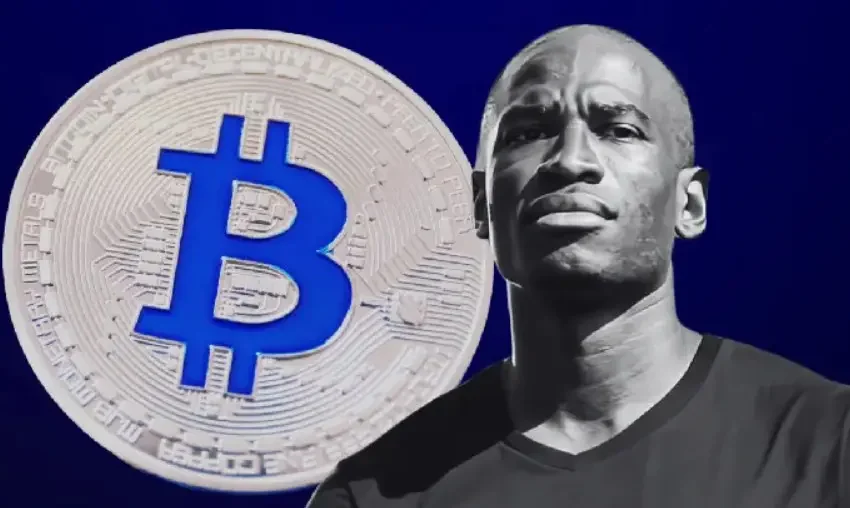Wintermute CEO Refutes Rumors of Collapse; Comparisons Made to FTX
Arthur Hayes Explains Why Money Printing Still Favors Bitcoin
(Originally posted on : Crypto News – iGaming.org )
Markets feel jittery; Arthur Hayes sounds calm. In a long chat with Kyle Chasse, the BitMEX founder mapped out why he thinks crypto now sits in the “real meat” of the cycle and why policy-driven liquidity sits at the center of it all.
Good to Know
- Hayes says mid-cycle momentum is starting and favors Bitcoin in heavy money-printing regimes
- He expects rate cuts and new credit pipes to push risk assets
- He argues stablecoins could grow into a double-digit-trillion market and reshape short-term rates
Hayes ties the next leg to politics and credit. He says President Trump will choose cash and credit expansion over restraint. In his words, “He’s going to provide more free sht… which is provide free sht and print money. And that’s what he’s going to do.” He even floated leadership changes at the U.S. central bank—“No more Powell”—and tweaks to tools like interest on reserves and the discount window to grease the system.
The mechanism, in his view, is simple. Cut the price of money and people lever up. “If I cut rates from four and a half to two, well, then you’re going to take more leverage and buy more stocks, and max out that credit card, and buy a new car, and take out a home equity loan.” That psychology powers risk assets—and Bitcoin benefits the most because of its fixed supply.
Bitcoin is Pure
He rejected the idea that crypto lags traditional markets. Hayes framed Bitcoin as the purest debasement trade: “Bitcoin has been the best performing asset on this currency debasement theme… across any asset class.” Deflate stock indexes or housing by gold and the story looks different; deflate by Bitcoin and the outperformance is extreme. For him, that is the core reason BTC remains the fastest horse when policymakers expand balance sheets.
New players only. Exclusive Welcome Bonus of 177% + 77 Free Spins
Credit creation matters more than the “real economy,” he added. “I don’t really care a [__] about the real economy. All I care about is the credit and the credit’s going to flow and it’s going to flow into Bitcoin.” He pointed to banks regaining capacity—citing Wells Fargo’s cap removal and a “450 to 500 billion” balance-sheet estimate from Zoltan Pozsar—as another liquidity engine that indirectly lifts crypto.
Stablecoins play a starring role in his roadmap. Hayes laid out how offshore dollars and demand from the Global South can pour into regulated dollar tokens held in T-bills and bank deposits, forming the base layer for DeFi usage. “The best thing about Bitcoin is that we don’t care where the money is going… as there’s more dollars yuan euro yen in the world… this asset that we own that is a fixed supply is going to go up asymptotically.” In his telling, stablecoin growth familiarizes millions with wallets, nudges them into DeFi, and pushes more capital toward volatile crypto—Bitcoin included.
He also argued the Fed could lose influence over the front end of the curve if Treasury sells T-bills directly to captive stablecoin buyers at yields of its choosing. That change, he says, would tilt real power toward the issuer of bills, not the setter of Fed funds—another path to easier conditions that markets like BTC tend to love.
Watching the Money Printer
Hayes isn’t hanging his hat on a single price level. He watches the expected path of money creation. If expectations get too hot, he trims. Otherwise, he keeps riding. He doesn’t buy the rigid four-year script either. The world, he says, is shifting from unipolar to multipolar, and governments print to keep voters calm: “So, I think we’re in this first inning of this massive change… therefore I don’t believe in the four-year cycle. I believe that we can continue ripping… because of this massive macro overlay.”
New players only. Exclusive 111% Welcome Bonus + 111 Free Spins
Altcoins get a sharper filter in his playbook. He thinks investors are finally rewarding projects that share revenue and buy back tokens—and shunning those that don’t. “If you’re a project that is not buying back your token… we don’t want to touch it.” He still puts Bitcoin at the center of the macro trade, while treating higher-beta names as tactical—especially around unlock calendars and positioning.
In short, Hayes’ map runs through policy, credit, and a fixed-supply asset designed for a world that keeps adding money. Rate cuts, fresh bank capacity, sovereign wealth deals, and a stablecoin wave all point to the same outcome. Liquidity finds an outlet. He believes Bitcoin remains that outlet.







 Bitcoin
Bitcoin  Ethereum
Ethereum  Tether
Tether  XRP
XRP  Solana
Solana  USDC
USDC  Lido Staked Ether
Lido Staked Ether  TRON
TRON  Dogecoin
Dogecoin  Cardano
Cardano  Wrapped stETH
Wrapped stETH  Wrapped Bitcoin
Wrapped Bitcoin  Figure Heloc
Figure Heloc  Ethena USDe
Ethena USDe  Chainlink
Chainlink  Stellar
Stellar  Hyperliquid
Hyperliquid  Bitcoin Cash
Bitcoin Cash  Wrapped eETH
Wrapped eETH  Sui
Sui  Avalanche
Avalanche  WETH
WETH  LEO Token
LEO Token  Binance Bridged USDT (BNB Smart Chain)
Binance Bridged USDT (BNB Smart Chain)  USDS
USDS  Coinbase Wrapped BTC
Coinbase Wrapped BTC  USDT0
USDT0  Hedera
Hedera  Litecoin
Litecoin  WhiteBIT Coin
WhiteBIT Coin  Shiba Inu
Shiba Inu  Ethena Staked USDe
Ethena Staked USDe  Monero
Monero  Cronos
Cronos  Toncoin
Toncoin  Mantle
Mantle  Dai
Dai  Polkadot
Polkadot  Zcash
Zcash  MemeCore
MemeCore  OKB
OKB  Uniswap
Uniswap  Aave
Aave  World Liberty Financial
World Liberty Financial  Bitget Token
Bitget Token  Bittensor
Bittensor  NEAR Protocol
NEAR Protocol  Pepe
Pepe  BlackRock USD Institutional Digital Liquidity Fund
BlackRock USD Institutional Digital Liquidity Fund  USD1
USD1  Jito Staked SOL
Jito Staked SOL  Ethena
Ethena  Currency One USD
Currency One USD  Aptos
Aptos  PayPal USD
PayPal USD  sUSDS
sUSDS  Ondo
Ondo  Ethereum Classic
Ethereum Classic  Binance-Peg WETH
Binance-Peg WETH  Aster
Aster  Jupiter Perpetuals Liquidity Provider Token
Jupiter Perpetuals Liquidity Provider Token  Worldcoin
Worldcoin  Binance Staked SOL
Binance Staked SOL  POL (ex-MATIC)
POL (ex-MATIC)  HTX DAO
HTX DAO  Gate
Gate  KuCoin
KuCoin  USDtb
USDtb  Story
Story  Internet Computer
Internet Computer  Rocket Pool ETH
Rocket Pool ETH  BFUSD
BFUSD  Pi Network
Pi Network  Arbitrum
Arbitrum  Algorand
Algorand  Tether Gold
Tether Gold  Wrapped BNB
Wrapped BNB  Falcon USD
Falcon USD  ChainOpera AI
ChainOpera AI  VeChain
VeChain  Cosmos Hub
Cosmos Hub  Kinetiq Staked HYPE
Kinetiq Staked HYPE  StakeWise Staked ETH
StakeWise Staked ETH  Pudgy Penguins
Pudgy Penguins  Sky
Sky  Liquid Staked ETH
Liquid Staked ETH  Pump.fun
Pump.fun  Lombard Staked BTC
Lombard Staked BTC  Quant
Quant  Sei
Sei  Render
Render  PAX Gold
PAX Gold  Renzo Restaked ETH
Renzo Restaked ETH  NEXO
NEXO